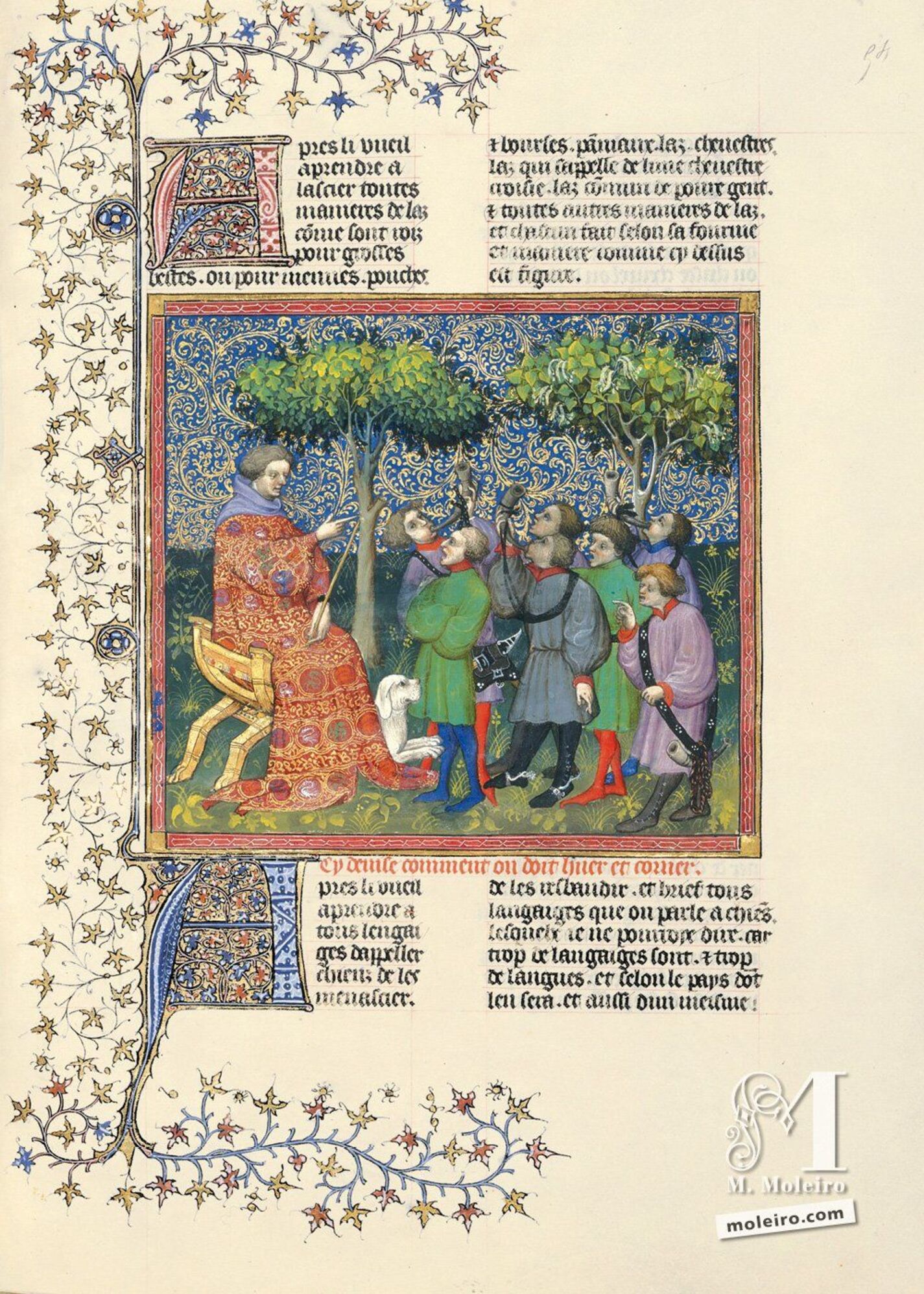After the lessons of caring for the dogs, whose names every good hunter should know, we come to the lesson of communication. It is not just to make noise that the hunters sound the horn. The horn, or hollering, allows them to communicate amongst one another from far away and without having to see each other, thanks to a very simple message similar to Morse code. To signal a great hart: two long notes or cries; to signal an attack, three long notes or cries. What we now call a good run, that is to say a hunt free of incidents, is marked by one long note followed by a series of three short notes. Fébus contents himself with indicating eight types of horns, one more than Henry de Ferrers, but seven fewer than his contemporary, Hardouin de Fontaine-Guérin. As we know, the horn would be replaced in France at the beginning of the 18th century by the trumpet, and simple long or short notes would give way to arias called fanfares. Louis XV himself would compose the deer´s aria, title the King´s Fanfare. Sat on a faldstool throne, sumptuously dressed, with his head unadorned and holding a cane in his left hand, the master teaches the apprentices (depicted here as adults – at least the first of which is given a caricature-like face). The scene takes place in the fresh air, in the shade of two leafy trees and on grassy ground covered with flowers. The character which stands out the most in the scene is the great master who imparts the lesson, while his large white hound, perhaps a bloodhound, sleeps at his feet.
Yves Christe,
Université de Genève

After the lessons of caring for the dogs, whose names every good hunter should know, we come to the lesson of communication. It is not just to make noise that the hunters sound the horn. The horn, or hollering, allows them to communicate amongst one another from far away and without having to see each other, thanks to a very simple message similar to Morse code. To signal a great hart: two long notes or cries; to signal an attack, three long notes or cries. What we now call a good run, that is to say a hunt free of incidents, is marked by one long note followed by a series of three short notes. Fébus contents himself with indicating eight types of horns, one more than Henry de Ferrers, but seven fewer than his contemporary, Hardouin de Fontaine-Guérin. As we know, the horn would be replaced in France at the beginning of the 18th century by the trumpet, and simple long or short notes would give way to arias called fanfares. Louis XV himself would compose the deer´s aria, title the King´s Fanfare. Sat on a faldstool throne, sumptuously dressed, with his head unadorned and holding a cane in his left hand, the master teaches the apprentices (depicted here as adults – at least the first of which is given a caricature-like face). The scene takes place in the fresh air, in the shade of two leafy trees and on grassy ground covered with flowers. The character which stands out the most in the scene is the great master who imparts the lesson, while his large white hound, perhaps a bloodhound, sleeps at his feet.
Yves Christe,
Université de Genève